T3 Sixty has found that brokerages fall along a set of technology-related continuums related to their models, structures and business approaches. Determining where brokerages land on each continuum provides an overall profile, which T3 calls the T3 Brokerage Technology Profile. It helps firms evaluate, think about and develop their technology strategy.
This is a key part of the real estate brokerage technology audit – the practice of evaluating and developing a comprehensive technology strategy that T3 Sixty offers to clients — and worth a focus before diving into more of the details of a successful audit.
The T3 Brokerage Technology Profile
The T3 Brokerage Technology Profile includes 10 elements. Each one covers an important business approach that plays a critical role in determining what type of technology brokerages should use and how they should implement it to find success.
The set of 10 continuums of the T3 Brokerage Technology Profile include:
- Agent Service Level (High Agent Service Level or Low Agent Service Level): Does the firm provide a high degree of curated technology and marketing services to its agents, or does it expect agents to self-serve from either an a la carte menu or even procure their technology independently?
- Digital Adoption (High Digital Adoption vs Low Digital Adoption): Does the firm rely on digital and technology solutions to serve its agents and clients, or does it prefer to deliver services using support staff and analog workflows?
- Consumer Data Approach (Data Collector vs Data Conservation): Does the firm rely on collecting as much client data as possible to offer an automated and personalized approach to its marketing and sales efforts or prefer to help clients protect and fortify their digital privacy?
- Lead-Generation Strategy (Company-Generated Leads vs Agent-Generated Leads): As part of its value proposition to its agents, does the firm sell its ability to provide company-generated leads, or does it rely on its agents to develop their own leads?
- Branding Orientation (Company-Led Branding vs Agent-Led Branding): When marketing its services to the public, does the firm provide a strong identifiable brand with consistent attributes, or does it encourage its agents to establish and create individual brands that speak to each agent or team’s unique brand?
- Team Approach (Team-Oriented vs Individual Agent-Oriented): Do self-directed teams of agents or individual agents comprise the brokerage’s roster now and in the future?
- Technology Differentiation (Tech-Forward Messaging vs Tech-Agnostic Messaging): When articulating its value proposition to prospective agents, does the firm position its technology stack to differentiate it from competitors?
- Tech Support (Internal Tech Support vs External Tech Support): Does the firm retain technical personnel to assist with day-to-day maintenance and development, or does it contract with third-parties to maintain and develop its technology stack?
- Adoption of New Technologies (Earlier vs Later Tech Adopter): Does the firm have an appetite for investing in new technologies as they become available, or does it prefer to wait and respond to environmental changes once they are well understood?
- Innovation Approach (Brokerage-Led Innovation vs Vendor- or Agent-Led Innovation): Do the firm’s culture and personnel resources reflect an aptitude for innovation, or does it leave innovation to their technology vendor or to agents in the firm?
Brokerages, often with the help of a facilitator, determine where they fit between the poles of each continuum. Placement on the continuum is fluid – picture a slider. The result of this exercise provides a picture of a brokerage’s aptitude and approach to technology. Management can also use the T3 Brokerage Technology Profile to identify where their firm stands now and where they would like to be.
Where a brokerage lands on each of these continuums (or intends to be) helps to determine which recommendations can best strengthen its technology stack. With thousands of products available to a brokerage’s management team, firms must focus on the products that align with their current or intended profile and strategic objectives.
Aligning a firm’s business model and profile can be one of the most powerful forms of technology optimization. Alignment often requires a deep understanding of a firm’s strategic goals, value proposition, and market position, but once understood and correctly implemented, can accelerate a firm’s competitive advantage.
Takeaway
This article is a snippet of the 2023 Swanepoel Trends Report chapter, “How to Seize the 2023 Brokerage Technology Dream.” To read the full chapter, reports can be purchased here.
